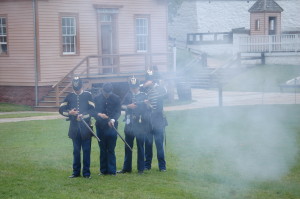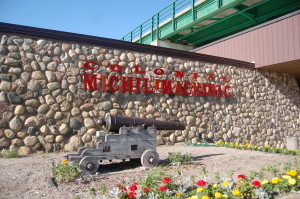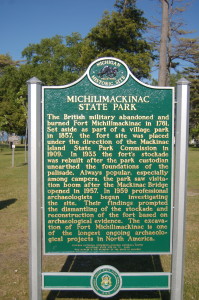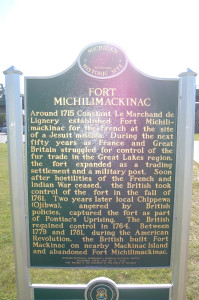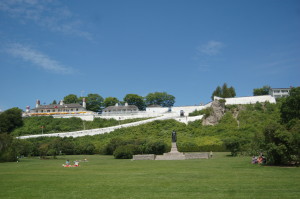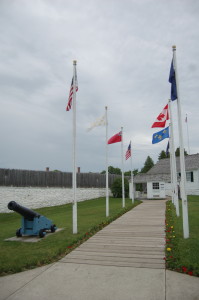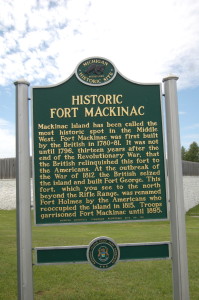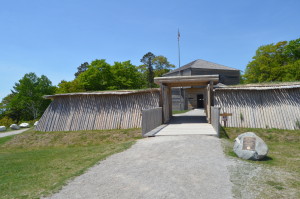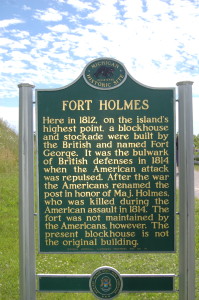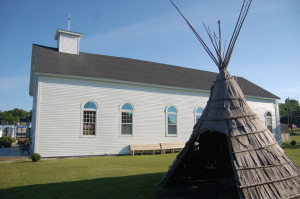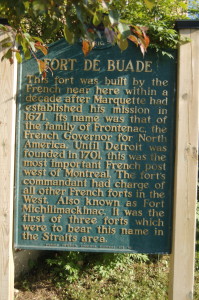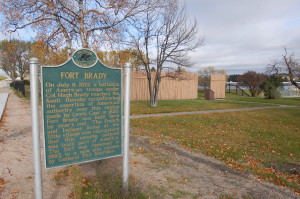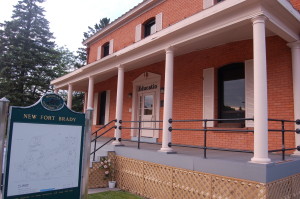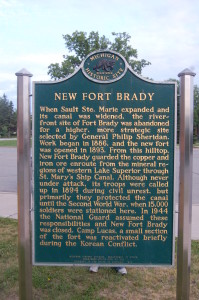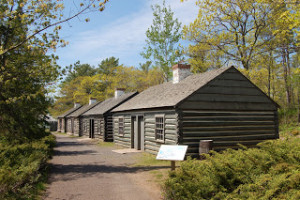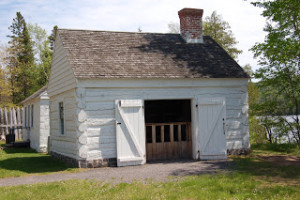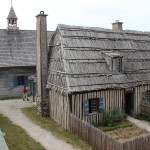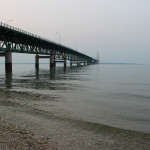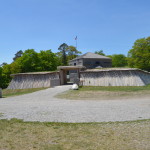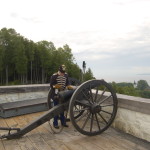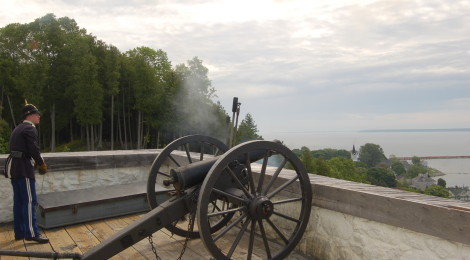
Historic Forts of Northern Michigan and the Upper Peninsula
Surrounded by four Great Lakes and located right in the middle of all major early trade routes, Michigan was also an ideal place for military forts in the 1700s, 1800s and 1900s. A handful of these forts have been restored and are open as state parks or museums, while at least a portion of others remain as a reminder of the past. Today we will take a look at forts in the northern part of the state, including the Mackinac region and the Upper Peninsula.
Fort Michlimiackinac, Mackinaw City – Built in the early 1700s, this fort and trading post was controlled by both the French and British at different times, and was the early settlement that Mackinaw City developed around. With a prime location at the convergence of Lakes Michigan and Huron, this was one of the busiest trading posts in Michigan and saw both good and bad relations develop with local Native American tribes over the years.
Today, this fort has been restored and is open to visitors as part of “Colonial Michlimackinac” at the foot of the Mackinac Bridge. The Old Mackinac Lighthouse is also part of the complex, as well as the day-use park that surrounds it. More information about hours and fees can be found here.
Fort Mackinac, Mackinac Island – After they abandoned Fort Michlimackinac on the mainland, the British built this limestone fort on Mackinac Island shortly after the Revolutionary War to replace it. Some buildings made the trip across the Straits to this new location, which saw two different battles during the War of 1812. Situated on a bluff high above water level, this fort had great sight lines and was coveted by the British and Americans alike for its location in the center of the fur trade routes.
The fort and much of Mackinac Island became the country’s second National Park in 1875, and was turned over to state control in 1895. Today it is open to visitors, who can tour 14 historic buildings and take in live demonstrations of the firing of guns (top of post) and cannons of the era.
There is a fee to enter the fort grounds, and more information can be found here. During the summer months it is one of the most popular tourist attractions in the state.
Fort Holmes, Mackinac Island – Originally called Fort George, this fort was built by the British during the War of 1812 to help backup Fort Mackinac. It sits on the highest point on the island, more than 300 feet above water level. When this site was turned over to American control in 1815, it was renamed for Major Andrew Holmes, who had been killed in a battle on the island the year prior. It was abandoned shortly after, and what remains now – earthen walls and a wooden entrance – is reconstructed to the way it looked at the time.
The view from this site is one of the best on the island, and while a steep flight of stairs leads to Fort Holmes from the road, the hike is worth it to check out this historic site and the incredible view.
Fort de Buade, St. Ignace – The first of the three main forts to be built in the Straits region, Fort de Buade was built in the late 1600s and was for many years an important fur trading post and staging area for French conflicts with the Indians. The St. Ignace Mission, shown above, was the first settlement in the area and the fort followed about a decade later.
The actual site of the fort is still unknown, but its historic marker sits in front of the municipal building on State St. near the waterfront. The mission and museum is located at 500 N. State St., while a store and museum (with 3,500 artifacts) with a fort-like exterior is called Fort de Buade and is located at 334 N. State St.
Fort Drummond, Drummond Island – This small fort was constructed on Drummond Island in the St. Mary’s River by the British after they were forced from Fort Mackinac following the War of 1812. The fort was only occupied for about a decade, and while some structures survived to present day this area is now private property (mostly summer cottages). A historical marker was placed near the entrance in 1977 and details the short life of this military outpost.
Fort Brady, Sault Ste. Marie – Constructed along the St. Mary’s River in the early 1800s to prevent British attacks from Canada, this fort was once an important part of Sault Ste. Marie, the oldest settlement in Michigan. Today all that remains are a few wood posts and a historic marker, on Water St. near the Coast Guard buildings.
New Fort Brady, Sault Ste. Marie – As shipping traffic increased in the 1890s, Fort Brady was no longer considered adequate and “New” Fort Brady was constructed on higher ground to the south. There were more than 64 buildings and at one point during World War II there were around 15,000 troops stationed here.
Today, the remaining 14 buildings are part of Lake Superior State University’s campus, just east of I-75 on Easterday Ave. A two-sided historic marker on site shows a site map on one side and gives a brief history of this military outpost on the other.
Fort Wilkins, Copper Harbor – When the Keweenaw copper rush of the 1840s kicked off, there were concerns that those coming to the area would have problems with Native Americans in the area who did not see eye to eye with mining operations. This led to the construction of Fort Wilkins in Copper Harbor, which consisted of 27 structures and proved to be largely unnecessary.
Today the fort has been reconstructed and is open as part of a state park that also includes two campgrounds and the Copper Harbor Lighthouse. The fort grounds border Lake Fanny Hooe and there are hiking trails and summer-month interpretive programs and re-enactments.

